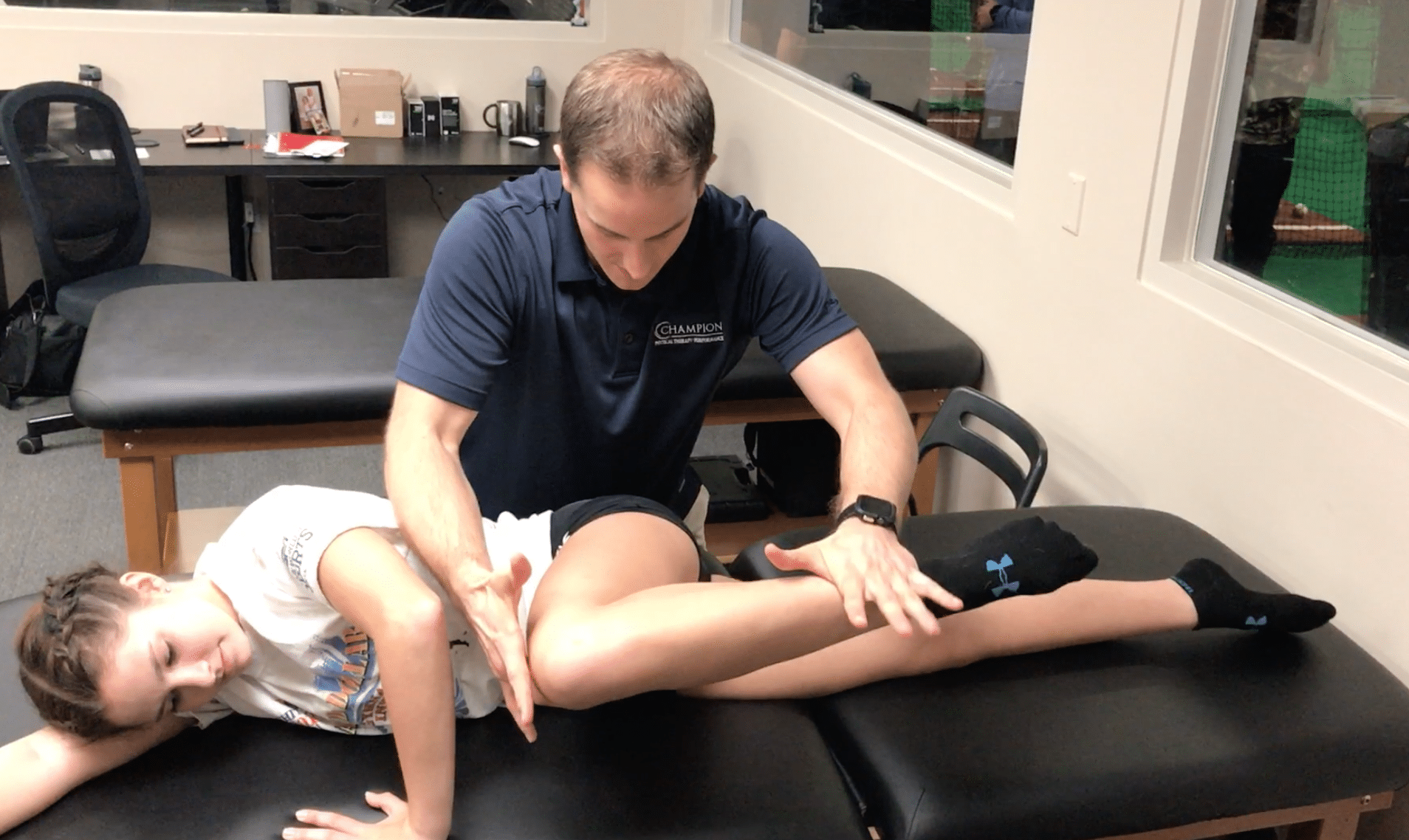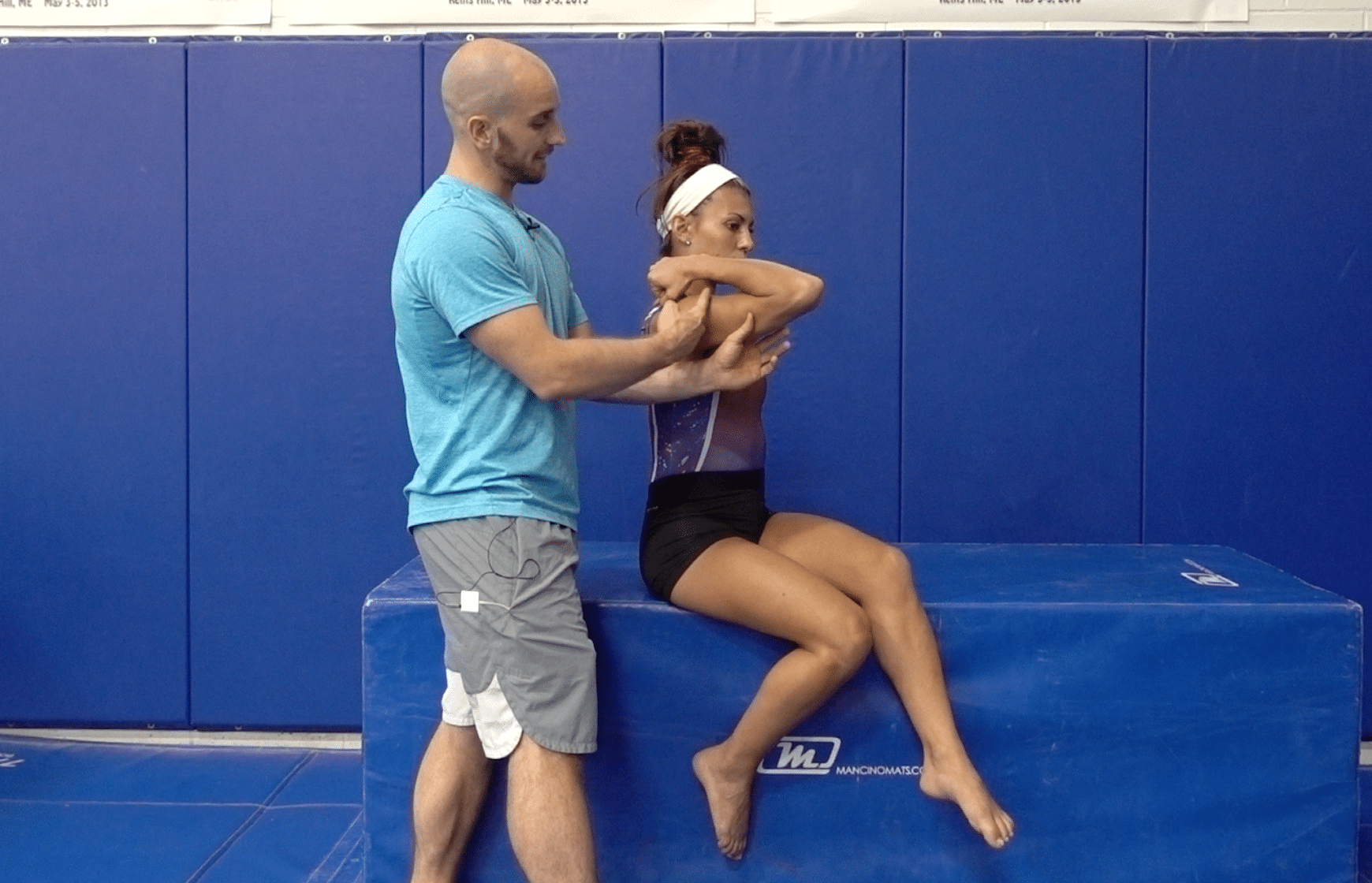Understanding and Combatting the Elbow Injury Epidemic in Gymnastics (Part 2)
After publishing Part 1 of this article series last week, I was completely blown away to see the response it got. Along with making it’s way around to thousands of people on social media, I also got quite a few emails asking questions about elbow issues and OCD injuries in gymnastics. I’m really happy that people enjoyed the information, and I thank everyone for taking the time to give it a read.
I’m going share even more, but if you want to learn about everything I think about on gymnastics injuries remember you can get my entire free ebook on this here,

Table of Contents
The Gymnastics Medical Injuries Guide
- Understand the most common injuries in male and female gymnastics, why they occur, and how to prevent them
- Read about the most current science on injuries and rehabilitation in gymnastics
- Get tips on the latest injury risk reduction and rehabilitation practices
We take our privacy seriously and will never share your information. Click here to read our full privacy policy.
More specifically in Part 1, I talked about the elbow not inherently being built for weight bearing, the crucial role of monitoring training volume, and also a period of time I refer to as the “Development – Talent Crossroads”. In this article, I will go into some more gymnastics specific details like shoulder/wrist flexibility, some specific skill technique, and things to look out for during training.
4. Properly Achieve and Maintain Shoulder Flexibility
The thought that limited shoulder flexibility can lead to increased elbow stress in gymnastics has been a long held belief by many coaches and medical providers. Although not specific to OCD in elbows, this interesting research study came out a few years discussing the correlation between limited overhead shoulder flexibility and increased wrist pain.
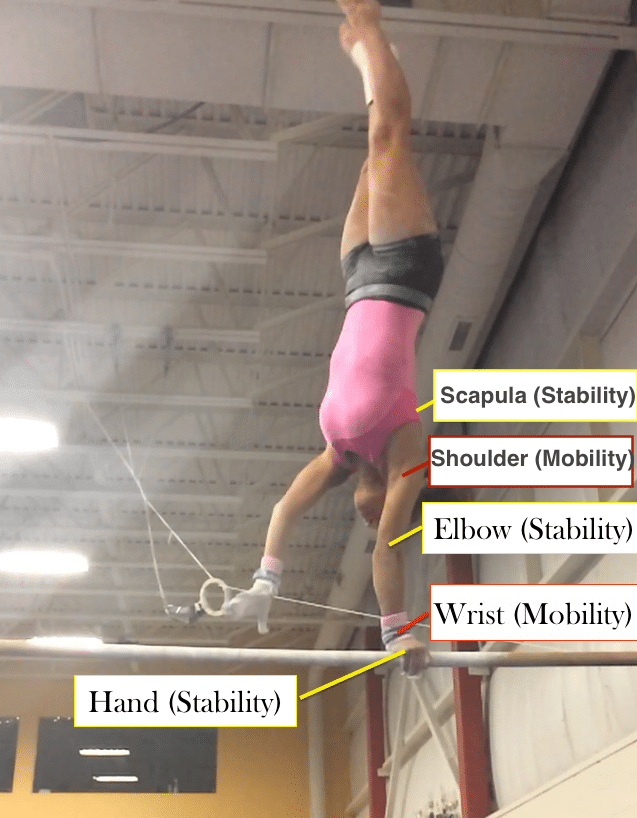
I don’t want to say that there is a direct correlation of limited shoulder flexibility causing elbow injuries in gymnasts. There are many factors to consider outisde of just this one to one cause. I will say that between all of the gymnasts I have treated, and the discussions I have had with other medical providers / elbow surgeons, there definitely seems to be a correlation between the two. Cleaning up shoulder flexibility issues can be seen as a “top down” approach to reducing stress on the elbow, and is often a good first step once training volume has been modified to allow the joint to calm down.

From here adding some more hypertrophy based shoulder/scapular strength is usually the next big part of my treatment plan. I typically like using manual strengthening and dumbell circuits together to build up shoulder strength. My programs then go to more power based training (think medballs and upper body plyometrics), as well as gymnastics specific patterns.
After overhead shoulder flexibility is addressed, we can then focus on getting the shoulder and entire arm strong to better absorb force. I feel this general template is important regardless of it being used in a elbow prevention, conservative rehabilitation, or post surgical situation.
I feel increasing shoulder flexibility in gymnasts really comes down to learning a bit more about anatomy, understanding muscular vs ligament/joint based stretching, and what flexibility methods have the best research support behind them. I posted this video a few weeks back on my facebook page, but I think it helps ties these things together.
5. Properly Achieve and Maintain Wrist Flexibility
Similar to above, a “bottom up” point of view can influence the elbow joint. Limited wrist flexibility can directly influence the amount of elbow force gymnasts take, as well as it’s ability to stay in a better alignment during impact skills.
If a gymnast does not have enough wrist extension flexibility, it may create a situation where proper lines are unable to be achieved in handstands, tumbling, beam series, and vaulting. As force can not be transferred evenly up through the arm into the trunk, it may create local overload onto the elbow joint. When you combine these biomechanical issues with the regular training volume most gymnasts experience day to day, it could create a situation where the cartilage breaks down as seen in OCD. I created a mini weight bearing wrist screen that uses a spotting block, as seen below.
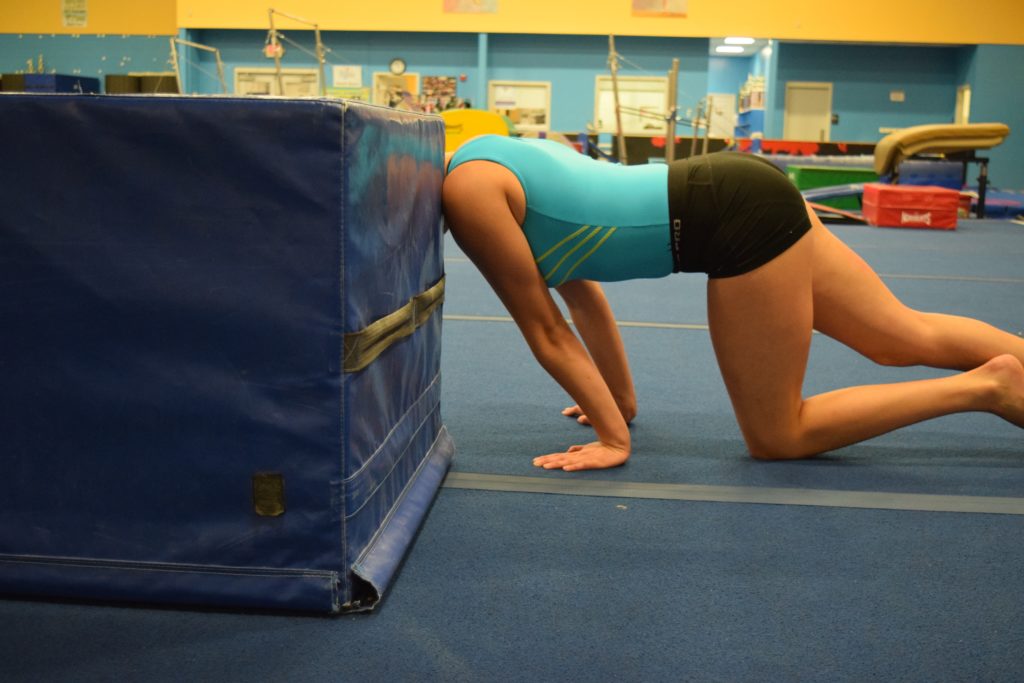
Swinging and gripping skills are going to over time create a lot of stiffness in the forearm flexors and pronators, which are located on the front/inside of the arm. If these muscles get overly worked and are not managed with regular soft tissue work, it is very easy for a gymnast to lose motion in the other direction of wrist extension and supination. For this reason, gymnasts really need to take care of their forearms through regular soft tissue work.
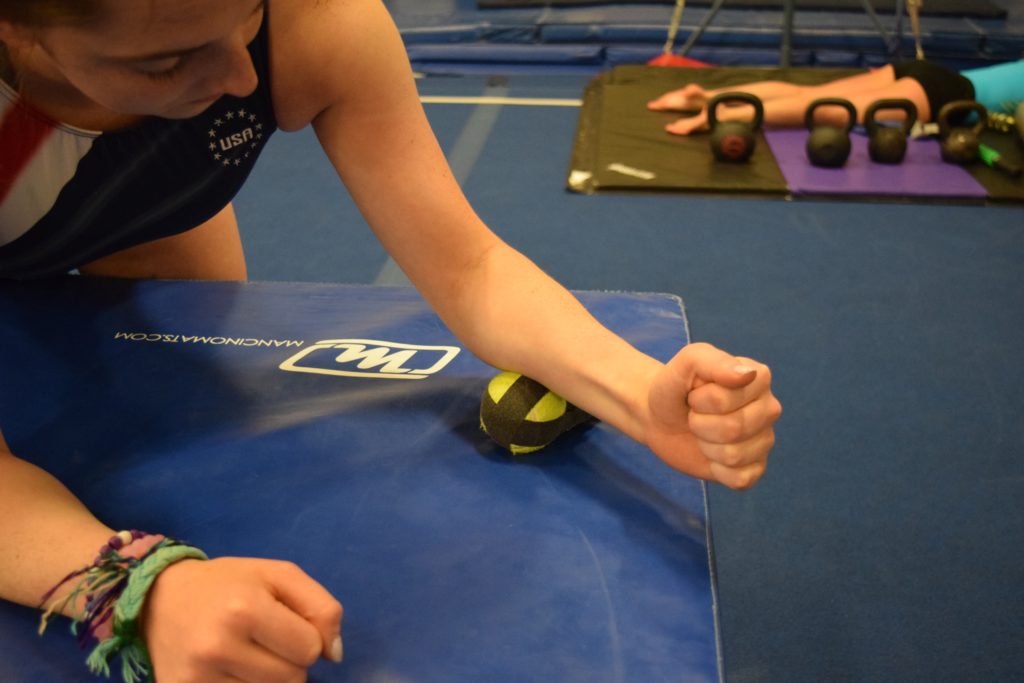
Remember though, no amount of high-level biomechanical theory will replace the umbrella training issues that commonly occur in gymnastics from Part 1. Respecting training load and individual growth always takes precedence.
That being said, if those global training factors are being addressed I often look to shoulder flexibility and wrist flexibility as a contributing factor. I have talked quite a bit about flexibility training in gymnastics, and the need to properly understand, screen, and address reasons behind flexibility problems in gymnastics. For those curious, definitely check out the video above or the blog articles I’ve previously written below.
6. Monitor Skill Technique and Consider Specific Anatomy
Given all I have talked about for global training concepts and areas around the elbow, there are definitely some important concepts to consider related to the elbow joint itself and certain gymnastics skills.
For one, gymnasts who have very hyper extended elbows do tend to be more at risk for elbow joint stress, and elbow overuse injuries. Research theorizes it is because more stress is placed on the elbow bones and cartilage during forceful weight bearing activities.
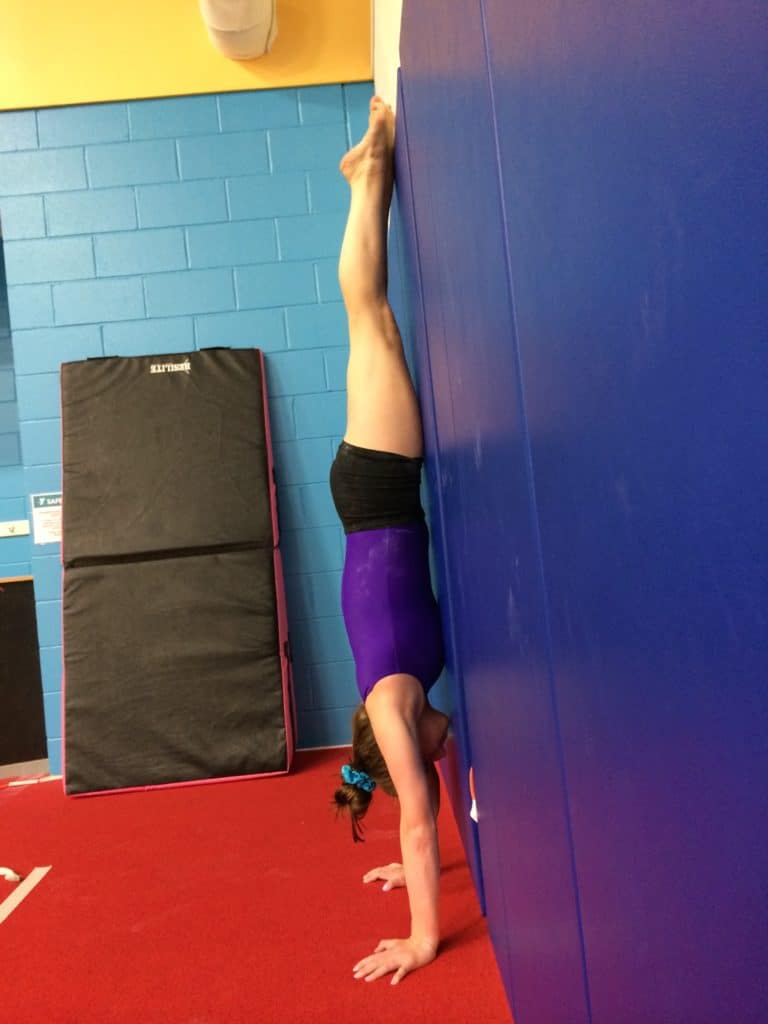
Obviously this is something that we can not change, but gymnasts can be encouraged to not forcefully lock out their elbow joints during training. There inevitable will be some hyper extension during skills, but I think the problem comes when gymnasts fully hyper extend their elbows all the time, rather than allowing for “soft elbows” in more neutral and some small bending when appropriate. Anyone reading this will know this is definitely a tough thing to address, but education for the athlete can be beneficial.
On a related note, there is the technical aspect of making sure fingers are not excessively turned out during vaulting, round offs, or other tumbling skills. When the hands are turned out excessively, it may not allow bend for force absorption should it be needed. A more neutral or slightly turned in placement is what I think is best, and it is what many high-level coaches I have been lucky to learn from promote as well. This creates a situation where muscular support can aid in absorbing force should the elbow take a lot and bend slightly.
Beam back handsprings are another skill I think there are potential technical points to consider. Encouraging as much of a “stacked” open shoulder position, as compared to a slightly broken shoulder angle, is important. I believe this allows for better force distribution up through the entire arm into the shoulder blade.
I also think it’s important we teach gymnasts how to get their lead leg moving quickly prior to impact, to prevent the majority of their body weight being unbalanced and behind their arms. This is more of a theory I have, which hopefully can be confirmed via force plate research soon. I believe that when this occurs, it places a lot of stress on the upper body, and the ground reaction forces from the beam are not ideally suited for the gymnast to handle. Notice in this photo below how both legs are greatly behind her body upon initial contact, placing a lot of force on her upper body.
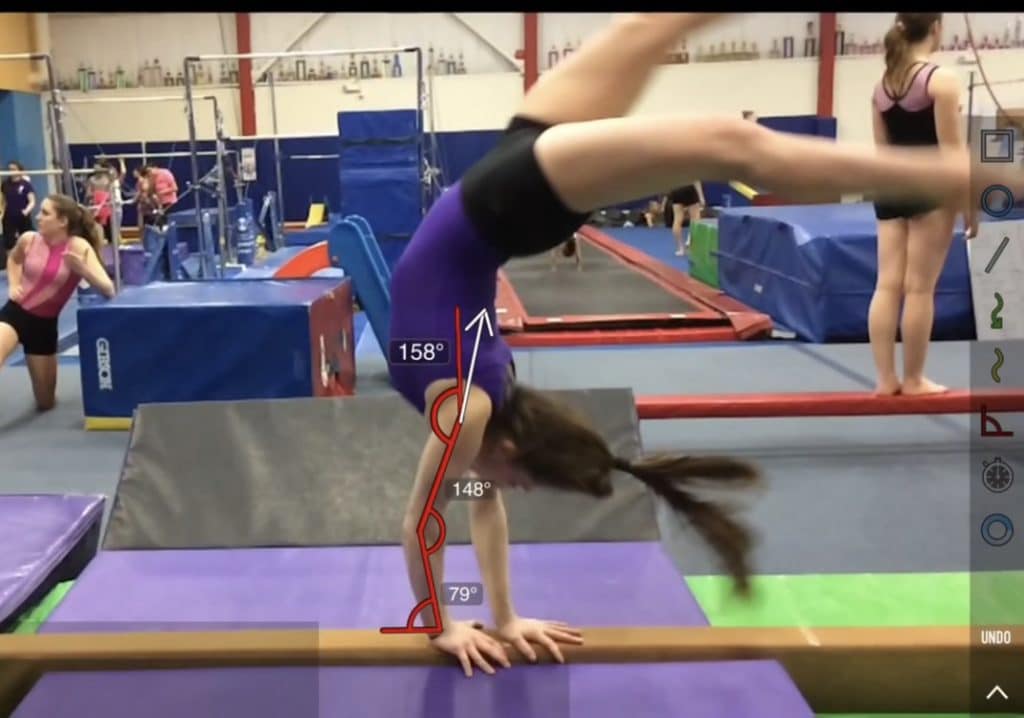
Lastly, as a coach I can’t stress enough the importance of perfecting body shaping, skill basics, strength development, and full technical preparation prior to doing high-volume of impact skills. Gymnastics is getting better about really being a stickler for basics and shaping, but too often I think we still see gymnasts “throwing skills” when they may not be fully prepared.
Rather than doing hundreds of back handsprings or tumbling passes, it’s often times best to break down the skill into chunks and really engineer the technique issue at hand. I think the best coaches in the world master basics and revisit them often, which I really think is the best method for everyone to adopt. Not only does it reduce the total stress a gymnast may handle, it can really save a lot of time and repetitions to feel comfortable with the skill, which may give elbows less demand over time.
Want to Learn More?
I think there are a lot of really easy self-soft tissue techniques and specific gymnastics stretches we can use to tackle the shoulder and wrist flexibility issues noted above. I have put together a free “Gymnastics Pre-Hab Guide” that covers the exact areas and stretches I feel gymnasts should to daily to work on this. To download the PDF and picture walk through explanations, just sign up for the SHIFT Insider Newsletter below and I will send it to you for free.
Download My New Free
10 Minute Gymnastics Flexibility Circuits
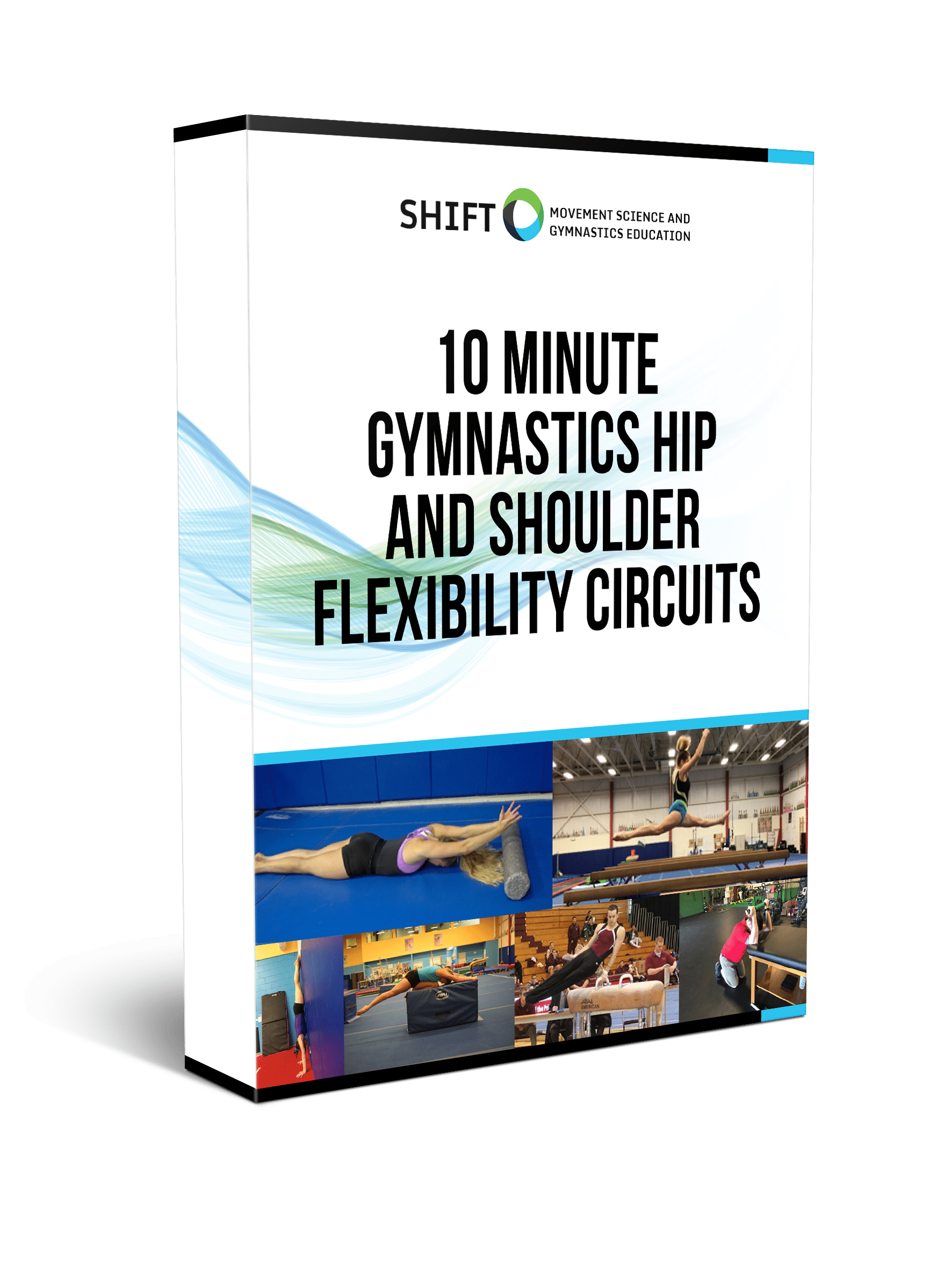
- 4 full hip and shoulder circuits in PDF
- Front splits, straddle splits, handstands and pommel horse/parallel bar flexibility
- Downloadable checklists to use at practice
- Exercise videos for every drill included
Concluding Thoughts
So again at the risk of really making this a long read, I will stop here for Part 2. In Part 3, I will offer a few more points related to early detection, gymnastics practice planning, things to teach gymnasts about, and some practical applications for practice. For now, I hope this was a helpful next step after last weeks article. Best of luck, and thanks for reading!



